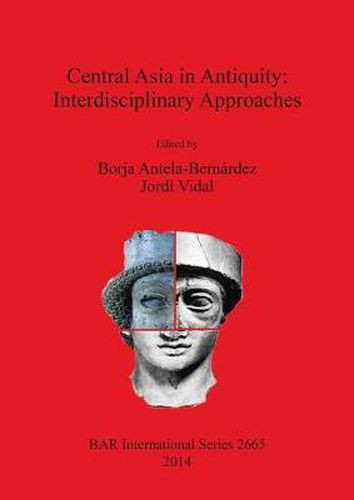Readings Newsletter
Become a Readings Member to make your shopping experience even easier.
Sign in or sign up for free!
You’re not far away from qualifying for FREE standard shipping within Australia
You’ve qualified for FREE standard shipping within Australia
The cart is loading…






This title is printed to order. This book may have been self-published. If so, we cannot guarantee the quality of the content. In the main most books will have gone through the editing process however some may not. We therefore suggest that you be aware of this before ordering this book. If in doubt check either the author or publisher’s details as we are unable to accept any returns unless they are faulty. Please contact us if you have any questions.
Central Asia is a wide subject of research in the archaeological and historical studies of the Ancient World. Scholars have usually focused on the complex and diverse questions that resulted from the analysis of the historical realities of this key region during Antiquity. The purpose of this book is to undertake an approach to the polymorphic and multiple aspects of Central Asia in Antiquity from several points of view. The starting point is the confidence in an interdisciplinary perspective as the mainway to understand the different aspects of the region in a very wide chronology: from the emergence of the cities and their relation with the nomadic populations, to the expansion of models and practices from Central Asia to the West during the campaignsand conquests led by Islam. Through subjects like warfare, gender studies and historiography, mainly from an archaeological point of view, the chapters analyze concrete sites like Mes Aynak, Uch Kulakh or Vardanzeh, but also models of interaction among the historical peoples living in Asia Central, like the Bactrians and the Persians, the Persians and Macedonians, the Greeks and the Indians, the Sassanid and the Romans, or even the Sassanid and the Steppe peoples. The result is a very clear example of the richness of starting an interdisciplinary dialogue with the intention of improving our perspectives and understandings of the complex relationships that, through Antiquity, the people living in Central Asia had developed and how scholars can, through archaeology and other related disciplines, approach the historical questions that arise in a close study of the subjects.
$9.00 standard shipping within Australia
FREE standard shipping within Australia for orders over $100.00
Express & International shipping calculated at checkout
This title is printed to order. This book may have been self-published. If so, we cannot guarantee the quality of the content. In the main most books will have gone through the editing process however some may not. We therefore suggest that you be aware of this before ordering this book. If in doubt check either the author or publisher’s details as we are unable to accept any returns unless they are faulty. Please contact us if you have any questions.
Central Asia is a wide subject of research in the archaeological and historical studies of the Ancient World. Scholars have usually focused on the complex and diverse questions that resulted from the analysis of the historical realities of this key region during Antiquity. The purpose of this book is to undertake an approach to the polymorphic and multiple aspects of Central Asia in Antiquity from several points of view. The starting point is the confidence in an interdisciplinary perspective as the mainway to understand the different aspects of the region in a very wide chronology: from the emergence of the cities and their relation with the nomadic populations, to the expansion of models and practices from Central Asia to the West during the campaignsand conquests led by Islam. Through subjects like warfare, gender studies and historiography, mainly from an archaeological point of view, the chapters analyze concrete sites like Mes Aynak, Uch Kulakh or Vardanzeh, but also models of interaction among the historical peoples living in Asia Central, like the Bactrians and the Persians, the Persians and Macedonians, the Greeks and the Indians, the Sassanid and the Romans, or even the Sassanid and the Steppe peoples. The result is a very clear example of the richness of starting an interdisciplinary dialogue with the intention of improving our perspectives and understandings of the complex relationships that, through Antiquity, the people living in Central Asia had developed and how scholars can, through archaeology and other related disciplines, approach the historical questions that arise in a close study of the subjects.